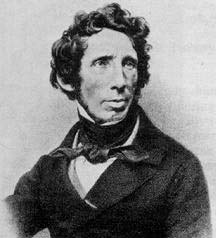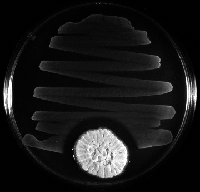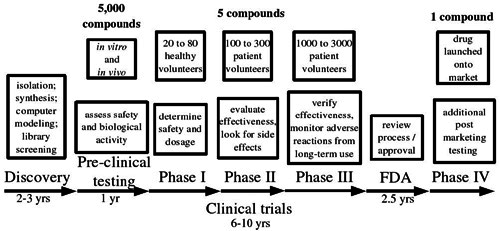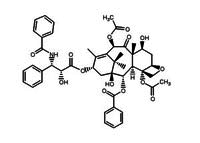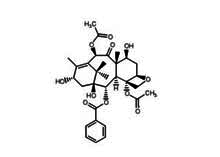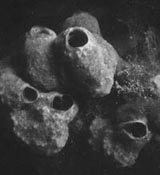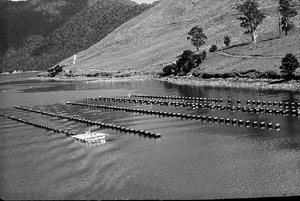Extravagant claims are often made for the health-giving effects of anti-oxidants in the foods we eat. But sorting out the truth from the hype is not at all easy.
In the window of a health-food shop, I saw an advertisement extolling the merits of Goji berries. The advertisement said that an ‘ORAC test’ had shown that Goji berries have a lot of anti-oxidants in them. ‘ORAC test’ has a scientific ring about it-Goji berries must be good!
Anti-oxidants have attracted a reputation as beneficial ingredients of foods, nutritional supplements and cosmetics. So I thought I would try to describe what anti-oxidants are, and explain what the ORAC test is and its limitations. I’ll also give some examples of anti-oxidants in fruits and vegetables, and make some comments as to whether it’s worthwhile taking supplements containing these anti-oxidants in an attempt to get more of them inside you than is usual from a healthy diet.
What are anti-oxidants? Let’s start with oxidation and move onto food. Oxidation is a process in which electrons are removed from atoms and molecules. Oxygen is the classic oxidising agent. Digestion of food and extraction of energy from it is essentially an oxidative process. It occurs over many steps but one of the final outcomes is the transfer of electrons to oxygen (which is why our existence is dependent on a supply of this gas*). When the electrons are passed to oxygen, water is formed but oxygen ‘radicals’ are also formed as a side effect. Radicals are atoms or molecules which have one or more unpaired electrons. By virtue of the unpaired electrons, radicals (sometimes referred to as ‘free radicals’) are extremely reactive. The oxygen radicals are no exception and if not mopped up will cause all sorts of havoc by reacting with molecules that they shouldn’t react with. In short, oxygen radicals are toxic.
An example of an oxygen radical generated in our bodies is the ‘superoxide radical’: O2.-, two oxygen atoms linked together to form a molecule that has an unpaired electron (the dot) and a negative charge (the dash). It’s been estimated that an adult weighing 70 kg makes about 1.7 kg of superoxide radicals a year. This is equivalent to about one percent of total oxygen consumption.
Molecules that can neutralise free radicals are called anti-oxidants. Anti-oxidants do not react only with oxygen radicals. Other ‘reactive species’ capable of causing oxidative damage and that react with anti-oxidants may contain, for example, nitrogen and sulphur. Barry Halliwell and John Gutteridge give a more formal definition of an anti-oxidant in Free Radicals and Biology in Medicine (2007), which is: “any substance that delays, prevents or removes oxidative damage to target molecules”.
Reactive species in addition to oxygen radicals also end up in our bodies. Cigarette smoke, for example, contains free radicals. Given the toxicity of oxygen radicals and other reactive species, it’s not suprising that anti-oxidants are considered a good thing, and that it’s thought a good idea to make sure we have as much of them inside our bodies as possible. Fortunately, our bodies have a number of built-in anti-oxidant systems to protect us against oxygen radicals formed as we breathe, and other reactive species. I am not going to deal with these systems but will confine my attention to dietary sources of anti-oxidants as it is these which are usually discussed in dietary advice and turn up in nutritional supplements. These anti-oxidants are, by and large, derived from plants.
Measuring Anti-oxidants
The ORAC test is one of the principal assays used to estimate the anti-oxidant content of such materials. (If all this seems a bit dry, bear with me because the nature of assays for anti-oxidants is central to claims that supplements, foods, etc, contain a lot of them.)
When an analyst is faced with developing a chemical assay to find out how much of something is in a sample of fruit or vegetable, one approach is to find some reagents which when added to the sample react with the substance(s) in question and in so doing exhibit a measurable change in some property of the mixture, eg an increase in colour intensity. Hopefully the technique is sufficiently sensitive (will measure quantities that are of interest to the analyst), selective (ideally the reagents react only with the substance(s) in question) and quantitative (the properties of the mixture change in a regular way as the amount of substance changes). Many assays are quite selective; others only give an indication of the amount of a class of compound. The ORAC test is of this latter type.
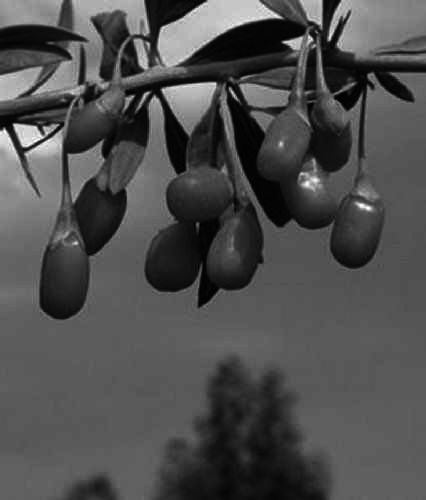
There are dozens of molecules that can be classed as anti-oxidants and it would be a lengthy and expensive task to identify the compounds in a sample every time an estimate of the overall level of anti-oxidant activity was required. Tests like the ORAC assay are used to estimate overall activity in a sample, the amount of activity being expressed as ‘equivalent to’ an amount of a ‘standard’ anti-oxidant compound.
ORAC stands for Oxygen Radical Absorbance Capacity. The basic premise behind this assay is that the ability of a sample to neutralise free radicals indicates the presence of anti-oxidants. When exposed to light, a substance called fluorescein emits light of a longer wavelength than that shining on it; this ‘fluorescence’ can be measured using a fluorimeter. Fluorescein also has the useful property that its fluorescence is diminished in the presence of free radicals. We would have the basis of an assay if we mixed our sample with fluorescein and a source of free radicals and saw that the decrease in fluorescence was less than in the absence of the sample because of the protective effect of anti-oxidants. This wouldn’t get us very far as about all we could do would be to say that one sample had more or less anti-oxidant activity than another. The assay could be made more quantitative if we were able to compare estimates of activity from various samples with those obtained using a known standard anti-oxidant. A commonly used one is Trolox, a synthetic analogue of vitamin E.
So in the complete assay we would measure the fluorescence coming from a series of solutions containing increasing amounts of Trolox but constant amounts of fluorescein and free radicals. If we run everything correctly there will be a regular and positive relationship between the fluorescence emitted and the amount of Trolox present. We would also measure the fluorescence coming from solutions containing the free radicals and our extract of Goji berries (no Trolox), and calculate that a measured amount of Goji berries contained an anti-oxidant activity equivalent to that provided by a known amount of Trolox. Another way of looking at this is that we have estimated so many grams of berries as having the same ability as a certain amount of Trolox to protect fluorescein from oxidation by the free radicals.
Remember that the ORAC test only gives a measure of the ability of our extract to protect fluorescein from the action of free radicals in vitro (in vitro-in the test tube; in vivo-in the living body). It says nothing about the anti-oxidant activity of the extract once it has been ingested (in vivo). A high ORAC value simply tells us that the extract contains molecules that might have some anti-oxidant activity in vivo.
The principal value of an assay of this type lies in the ability to compare different samples of plants, foods etc according to a single property. The table below contains some ORAC values for anti-oxidant levels in some fruits and vegetables. These values have been taken from a larger set published by the United States Department of Agriculture (USDA, 2007).
The units of measurement are µmol Trolox Equivalents per 100 g fresh weight (FW) of fruit or vegetable. Fresh weight is the weight of the leaf, fruit etc as it is harvested with no adhering dirt, fully hydrated but with no surface drops of water. A mole (abbreviated as mol) is a measure of the amount of Trolox and 1 µmol of Trolox has a mass of 0.00025 g. So, if a vegetable has an ORAC value of 1000 TE per 100 g FW, then 100 g FW of the vegetable has the same ability, in the test-tube, to neutralise free radicals as 1000 µmol or 0.25 g of Trolox.
| |
µmol TE / 100 g FW |
|
|
| Turmeric |
119346 |
|
|
| Curry powder |
6665 |
|
|
| Blueberries |
6552 |
|
|
| Apples, Granny Smith, raw with skin |
3898 |
|
|
| without skin |
2573 |
|
|
| Cashew nuts, raw |
1948 |
|
|
| Avocadoes, Hass |
1933 |
|
|
| Onions, raw |
1034 |
|
|
| Green peppers, raw |
923 |
|
|
| Bananas,raw |
879 |
|
|
| Carrots, raw |
666 |
|
|
| Cabbage,raw |
508 |
|
|
| Tomatoes, raw |
367 |
|
|
| …and Goji berries? It’s not easy to find a reputable ORAC value but it does seem to be considerably higher than most other plants tested. |
Examples of anti-oxidants
What are these anti-oxidants of plant origin? Here are a few examples, with some comments as to whether they exert a beneficial effect in vivo.
Vitamin C or ascorbic acid: This is an essential nutrient, famous for its role in the prevention of scurvy. It is an anti-oxidant in vitro but it is uncertain as to whether it has any major effects as an anti-oxidant in vivo. Sufficient vitamin C to maintain health can be obtained from a diet including fruits and vegetables. With such a diet, there is no evidence of beneficial effects of supplementary doses.
(Scurvy is a deficiency disease of connective tissue. The role of vitamin C here is not that of an anti-oxidant but to ensure that enzymes involved in the synthesis of connective tissue function effectively.)
Vitamin E: Vitamin E was first defined as a fat-soluble ‘factor’ necessary for reproduction in rats. It is not a single compound, a number of substances having vitamin E activity. The principal ‘natural’ form is α-tocopherol. Mixtures of tocopherols are found, for example, in soybean, corn, walnut and rapeseed oils. The evidence for anti-oxidant effects in well-nourished humans is limited.
Carotenoids: These are orange and yellow pigments found in plants, most typically in carrots. ß-carotene is a common carotenoid. There is only weak evidence that they have an anti-oxidant role in vivo. (They do have an important role in the diet for other reasons, principally as a precursor for vitamin A.)
Polyphenols: Polyphenols are compounds that have groups of six carbon atoms linked together in rings. The rings have hydroxyl groups (-OH) attached to them. Polyphenols of plant origin are excellent anti-oxidants in vitro, but it does not follow that they have the same effect in vivo. This group contains the compounds found in blueberries and blackcurrants and some have become quite well known through discussion of their potential anti-oxidant properties, eg resveratrol from red wine, quercetin in teas and onions, and curcumin from turmeric.
Epidemiology
There is evidence from epidemiological studies of correlations between anti-oxidant levels in the body and good health, and between good health and diets rich in fruit and vegetables. Correlations however do not prove causation and it remains uncertain whether the correlations observed are due to compounds exerting anti-oxidant effects in vivo. A further problem in interpreting epidemiological studies is that it is difficult to be accurate about the relationship between dietary intake and incidence of disease, particularly when studies seek to understand data gathered across different countries. Intervention studies
Intervention studies (where one group of subjects is provided with a supplement, and their health and physiological status is compared to a matched group receiving a placebo) might help us decide whether supplements are worth taking, but it has proved difficult to obtain evidence of a cause and effect relationship in these. Halliwell & Gutteridge (2007) describe the literature on intervention studies seeking to demonstrate a link between diet and supplementary anti-oxidants as a “morass of confusing data”.
Some clarity on the effects of supplements of some anti-oxidants (ß-carotene, vitamins A, C, E) and selenium has been given by a recent Cochrane review (Bjelakovic et al., 2008). This review considered 67 trials, involving 232,550 people, of the effects of taking supplements of these anti-oxidants. The principal conclusion from consideration of all this data was that overall, there is no evidence for an effect of these supplements on mortality in healthy people or those with various diseases. When the effects of different supplements were looked at separately, there was an increased risk (which only just reached statistical significance) of mortality associated with supplements of vitamins A, E and beta-carotene. There were no significant effects on mortality from vitamin C or selenium supplementation. (Selenium is an essential nutrient and is a component of several enzymes, some of which are thought to have anti-oxidant functions.)
Conclusion
What to do? If we take the epidemiological evidence as our guide, eating lots of fruit and vegetables is sensible advice. They have established beneficial effects, such as being enjoyable to eat, providing fibre and helping to maintain adequate levels of vitamins and minerals. The anti-oxidants they contain might exert a direct beneficial effect in vivo. At this point in our knowledge of dietary anti-oxidants and their effects in vivo, there seems little, if any, point in spending money on supplements of anti-oxidants.
Alan Hart spent over 30 years doing biology research. The last 15 were spent developing assays of various kinds. He has an interest in the meaning and practice of biological measurement.
*An excellent and readable account of the role of oxygen in our world, including a discussion of oxygen radicals and anti-oxidants, is Nick Lane, 2002: Oxygen, The molecule that made the world, Oxford University Press.


